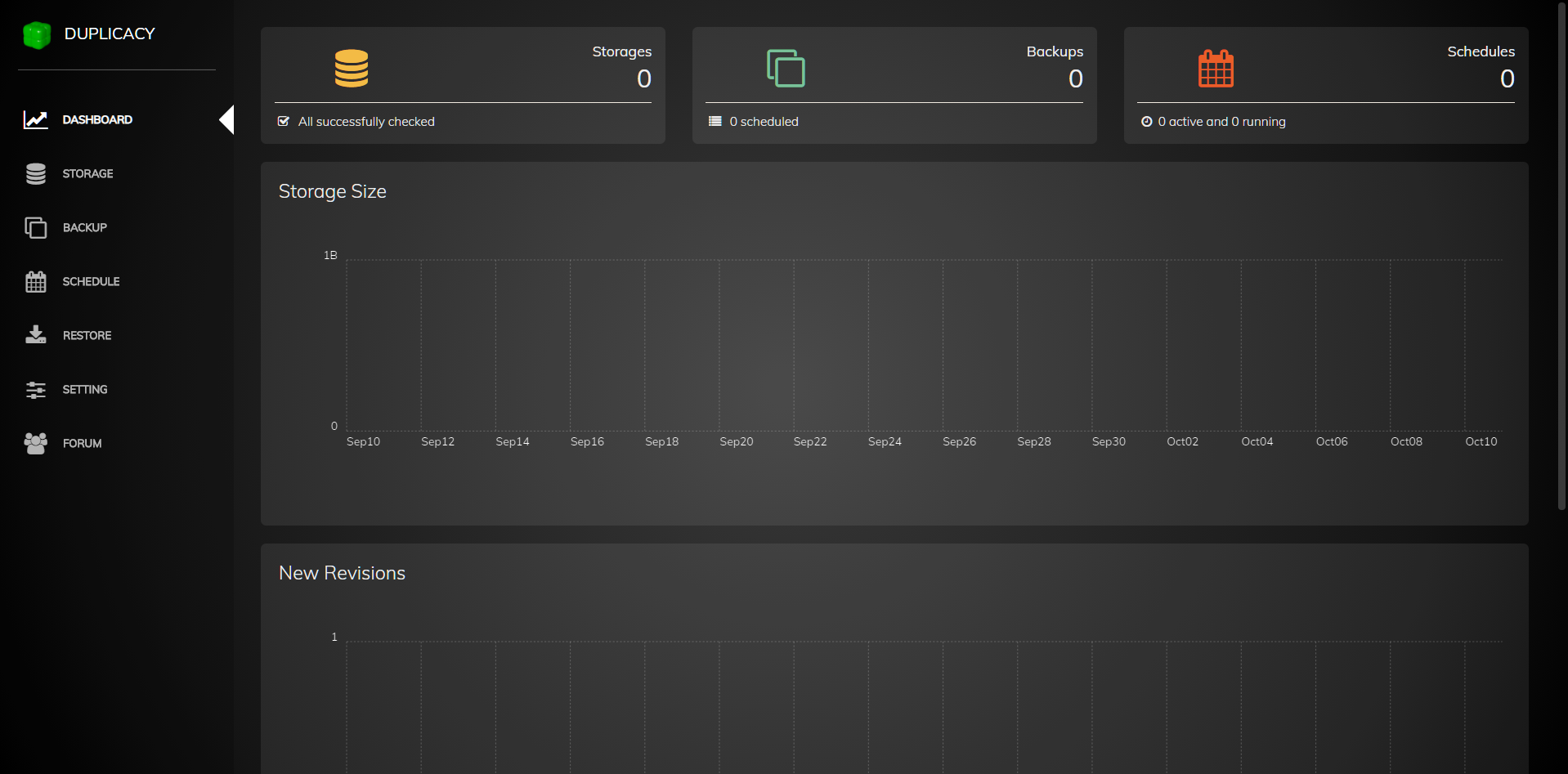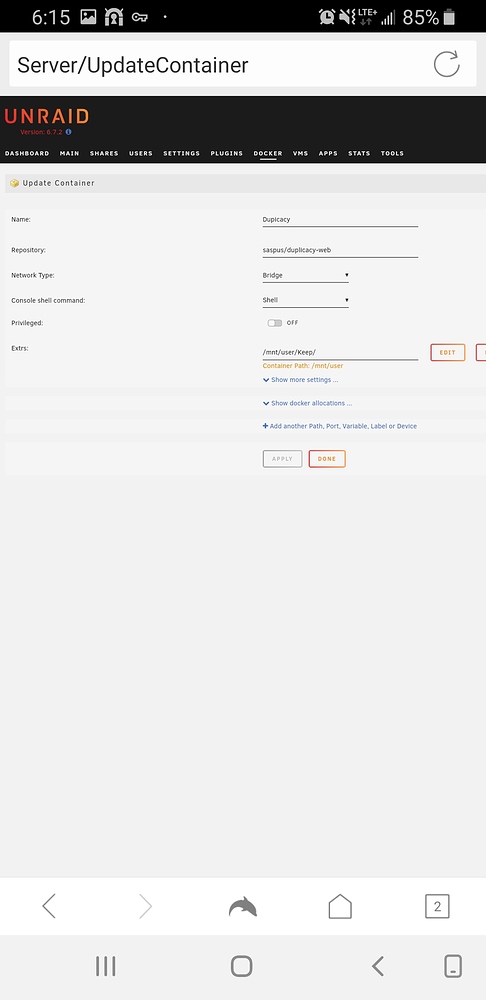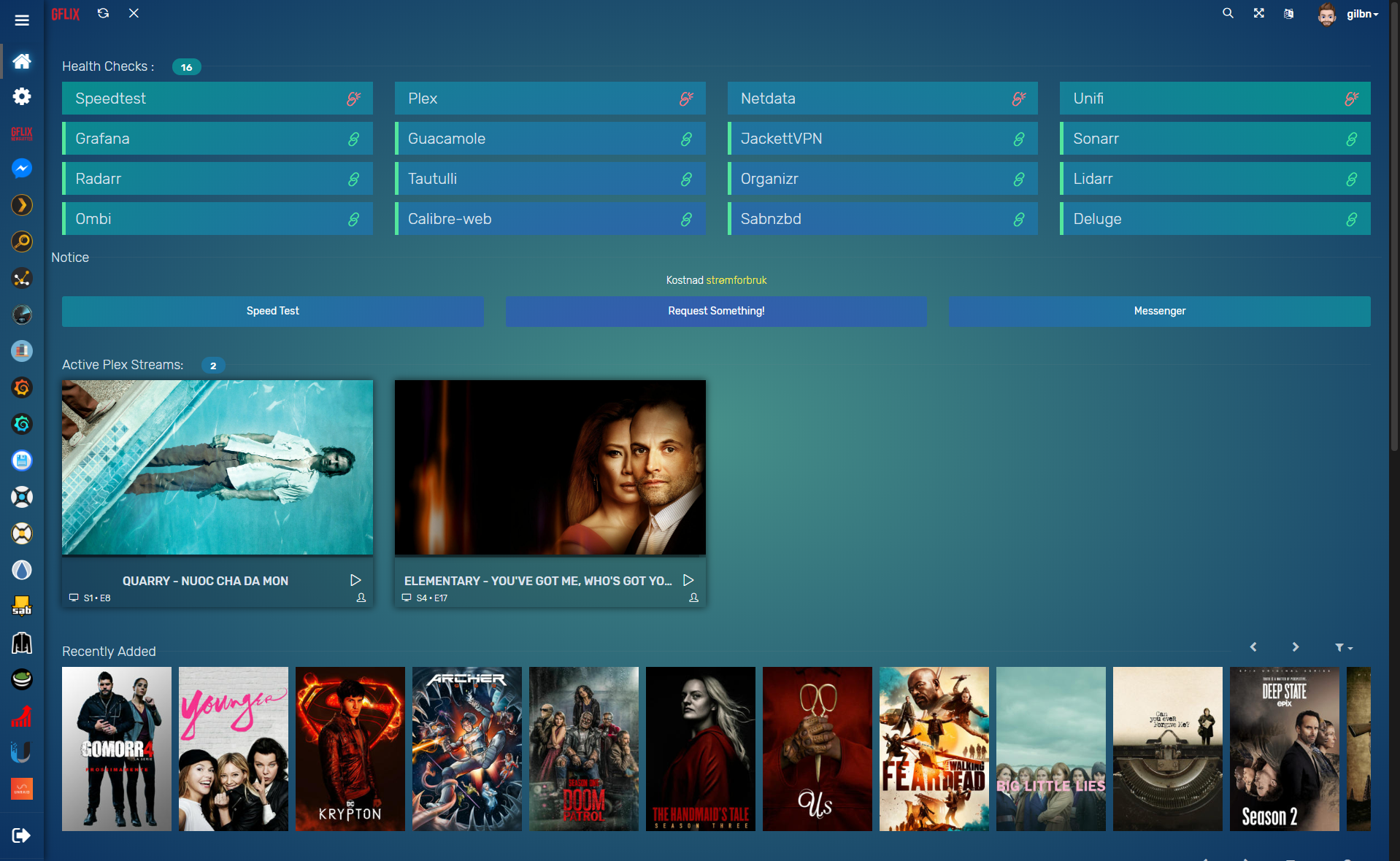
#Duplicacy docker code


Navigate to your containers environment.In my case, that command will be mkdir /mnt/service-data/heimdall. Create a persistent data directory for Heimdall.Some of these settings may look dissimilar in different versions, though I would be surprised if they differed significantly. The specific stepsĪll of these steps are as of Portainer version 2.1.1 in spring 2021. Let’s configure a new Heimdall instance within Portainer. But I’m willing to run with it for another six months and see how my perspective changes. Would I migrate to Portainer again? I’m not sure. It’s easier than using an SSH to my host system, finding the correct docker-compose.yml file, and typing the status or restart commands. Both approaches have advantages and disadvantages.īut I do like how Portainer lets me navigate to a single dashboard, check the status of running containers, restart them, etc. I was getting tired of juggling half a dozen docker-compose.yml files around.Īm I entirely happy with this migration? No, of course not.But recently I migrated everything to Portainer. Historically I’ve run my personal containers using docker-compose. That’s because they’re easy to use, clear, and concisely documented, so I tend to check here first when I need a new image. I’ve been using LinuxServer.io images for a couple of years. Our primary goal is to provide easy-to-use and streamlined Docker images with clear and concise documentation. At our core are the principles behind Free and Open Source Software. LinuxServer.io describes their organization as:Ī group of like-minded enthusiasts from across the world who build and maintain the largest collection of Docker images on the web.
#Duplicacy docker update
You can also read about how I run the Unifi controller, how I run Plex, how I update DuckDNS, and how I run Duplicacy. This is my fifth post documenting containers I use at home.

This post is about how I set it up using LinuxServer.io’s image. I find the visual format of the bookmarks makes navigation quick and obvious. For example, remembering that Duplicacy Web is on port 3875 is no fun.īrowser bookmarks can work just fine, but Heimdall is a tool that provides a little extra layering on top. But since they’re all running on one machine, and thus different ports, navigating to them can be a pain.

Most of these services are accessible via a browser. I have found these services useful and fun to get running, especially while stuck at home during this pandemic.
#Duplicacy docker software
I run a handful of software services in my own home.


 0 kommentar(er)
0 kommentar(er)
